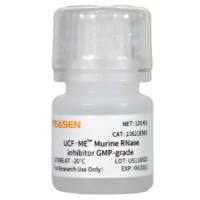There is now compelling evidence to show that tumors, once believed to be a homogeneous mass of abnormally proliferative cells, comprise a heterogeneous population of transformed cells resembling the hierarchically organized populations in the corresponding tissue. At the top of this tumor hierarchy are the cancer stem cells (CSCs) which are critical for tumor growth and maintenance as they constantly replenish the tumor bulk and are believed to be resistant to most conventional chemotherapies. The first evidence for both malignant hierarchy and CSCs came from studies on acute myeloid leukemia (AML) (1 , 2 ) followed by mounting evidence in other types of cancer ( 3 –5 ) . Murine models of leukemia have been the proving ground for the elucidation of key novel concepts in this nascent field of CSC research. A spate of recent studies highlighting the importance of CSCs in cancer has accentuated the need for identifying and characterizing these cells. The frequency of CSCs in the leukemic bulk (LSCs) is usually estimated by in vivo limiting-dilution transplantation assays of leukemic cells into recipient animal hosts in which identical leukemias can be regenerated. Each cell that is capable of propagating the leukemia in secondary recipients is termed a leukemia-propagating cell (LPC).
LSC candidates have been typically identified by the systematic dissection of compartments within a heterogeneous tumor to determine the subpopulation which shows maximal enrichment for LPCs. This is performed by determining the frequency of LPCs in each of those purified subpopulations, as has been described in both human and murine models of leukemia ( 1 , 2 , 6 ). It is important to mention that even though leukemia repopulation is often used as a surrogate for LSC estimation, the term LPCs can be equated with LSCs only if the phenotypic heterogeneity of the original tumor mass is regenerated upon tumor propagation into secondary recipients.
The first part of the chapter deals with the estimation of LPCs in syngenic or congenic murine–murine models. In the second part, murine xenograft models for the estimation of LSCs in human leukemias are described.






